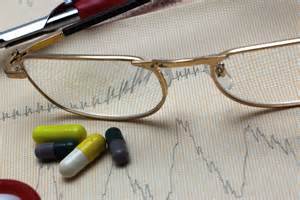How the Human Eye Works

|
Mark Twain |
Human vision is more than just seeing. The human eye is more than a mechanical tool for vision; it is hardwired into your brain, and therefore is an extension of your brain, which affects your perception and vision of the outside world, as well as reflects what and how you think. As such, it is the most important human organ, and is your greatest asset.
Eyesight is the greatest gift from Mother Nature to mankind which involves the ability to distinguish between the good bad, big, small, ugly, beautiful things. Less ability to see is a big hindrance in every ground of life. It plays an important role to laver down the success rate on an individual’s performance. Some cases of poor vision can also be the result of inherence and age, for which treatments and betterment chances are very low. However, in most cases, weak eyesight can be best eliminated with the help of some natural remedies or workable and efficient eye exercises. In the other case, weak eyesight left untreated creates complications.
The human eye has been called the most complex organ in our body. It's amazing that something so small can have so many working parts. But when you consider how difficult the task of providing vision really is, perhaps it's no wonder after all. The eyes are a very special part of the body, composed in part of tissue identical to brain tissue and very closely linked to the brain in many functions. Nevertheless, the eyes are connected with the rest of the body by through blood vessels, nerves, muscles. They simultaneously affect the rest of the body and are affected by it.

|
Our eyes are hands down the most complex and impressive organs in our bodies. What makes them so impressive is not only the fact that they let us perceive a wonderful three-dimensional world, but also because of how it’s done. |
Eyes are an incredibly intricate organ unlike any other. Our eyes allow us to see in color, to see near and far, and to have a sharp sense of perception. Our eyes are responsible for keeping a clear and focused image of the outside world while our brain works to recognize these images using visual memory. In a number of ways, the human eye works much like a digital camera.
Cornea
It is the clear skin that covers the front of your eye. It’s as clear as glass, which acts like a camera lens and contains no blood vessels. Light is focused primarily by the cornea. The first step to creating images with the eye starts at the cornea. Light bouncing off objects is sent through the cornea, where it will then refract and bend light through the pupil, the black center of our eyes.
Sclera
It is the tough skin that surrounds most of the outside of the eyeball, known as the “white” of the eye.
Iris
It is the colored part of your eye (blue, brown, green…) that controls the amount of light that enters your eye.
Pupil
It is the hole in the iris that lets light into your eye. It becomes tiny in bright sunlight and larger in darkness. If you’ve ever paid close attention to your pupil, you’ll have noticed it expanding and contracting. This is the doing of the iris, or the colored portion of your eye. The iris’s job is to calibrate the amount of light being let in. For example, in darker settings, your iris will expand to let as much light in as possible.
Lens
The eye's crystalline lens is located directly behind the pupil and further focuses light. Through a process called accommodation, this lens helps the eye automatically focus on near and approaching objects, like an autofocus camera lens. It changes shape as needed to ensure the “picture” on the retina is as clear as possible. Lens focuses light onto the retina. It changes shape as needed to ensure the “picture” on the retina is as clear as possible.
Retina
Retina is your eyes very own upside down movie screen. Light focused by the cornea and crystalline lens then reaches the retina - the light-sensitive inner lining of the back of the eye. The retina acts like an electronic image sensor of a digital camera, converting optical images into electronic signals. The optic nerve then transmits these signals to the visual cortex - the part of the brain that controls our sense of sight. Your retina has cells called rods and cones (named for their shape). Rods see black and white; cones see color. Each eye has about 120 million rods and 7 million cones! Together, they’re responsible for changing the received light into impulses. Once these rods and cones receive the images, they are converted into electrical impulses. These impulses are then sent through the optic nerve, and to the brain.
Blind spot
It is a tiny spot on your retina which isn’t sensitive to light because it has no rods or cones. This is the spot where the optic nerve joins the retina.
Optic nerve
It transmits the electrical messages from the retina to your brain.
Macula
It is in the center of your retina. Produces your central vision which enables you to read, drive, and perform other activities requiring fine, sharp, straight-ahead vision.
Other parts of the human eye play a supporting role in the main activity of sight:
- Some carry fluids (such as tears and blood) to lubricate or nourish the eye.
- Others are muscles that allow the eye to move.
- Some parts protect the eye from injury (such as the lids and the epithelium of the cornea).
- And some are messengers, sending sensory information to the brain (such as the pain-sensing nerves in the cornea and the optic nerve behind the retina).
- How the Brain and Eyes Work Together
- Ocular Muscles and How They Work
- What is Eyes Blinking
- Fun Vision Facts
- How Eye Color is Determined











